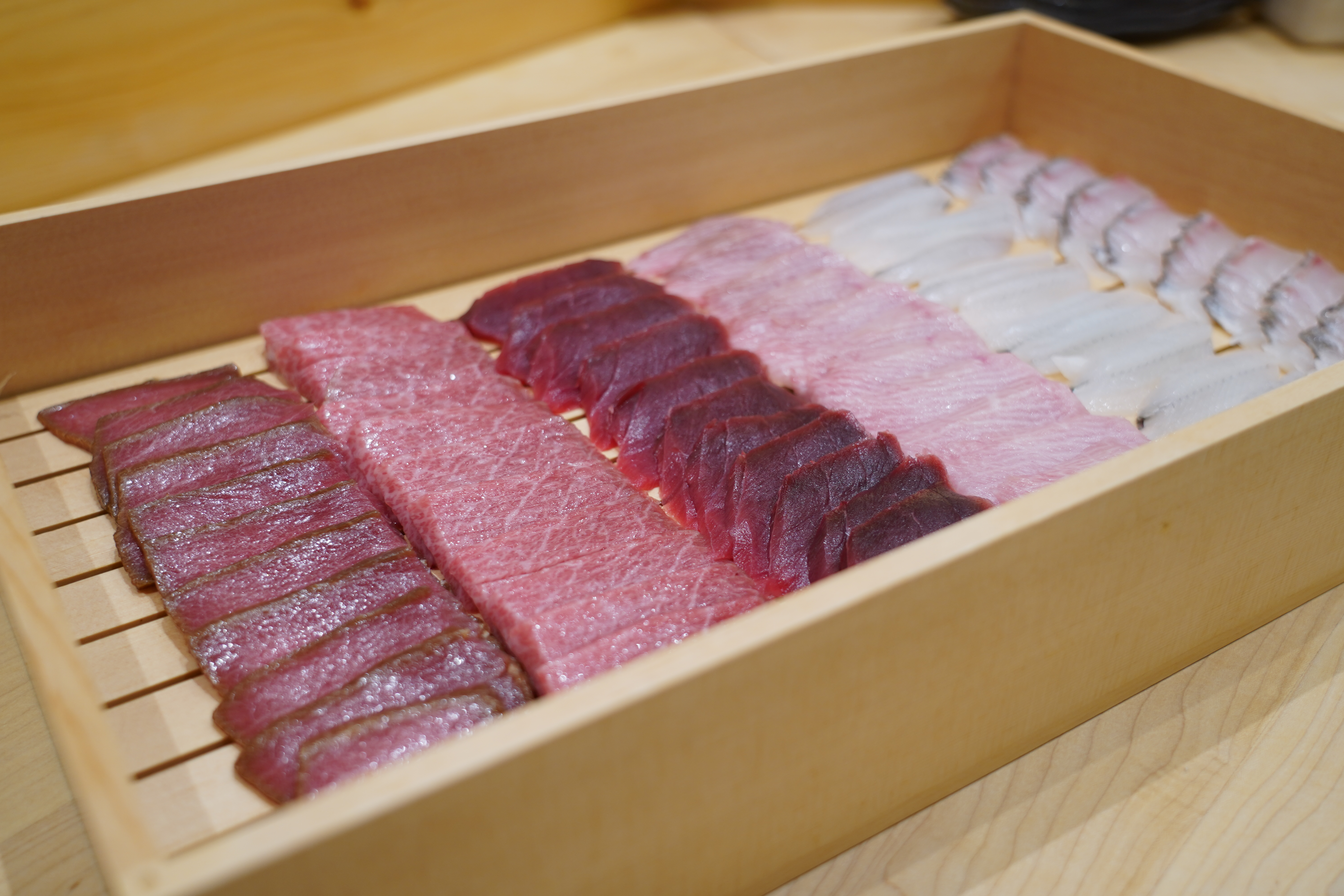
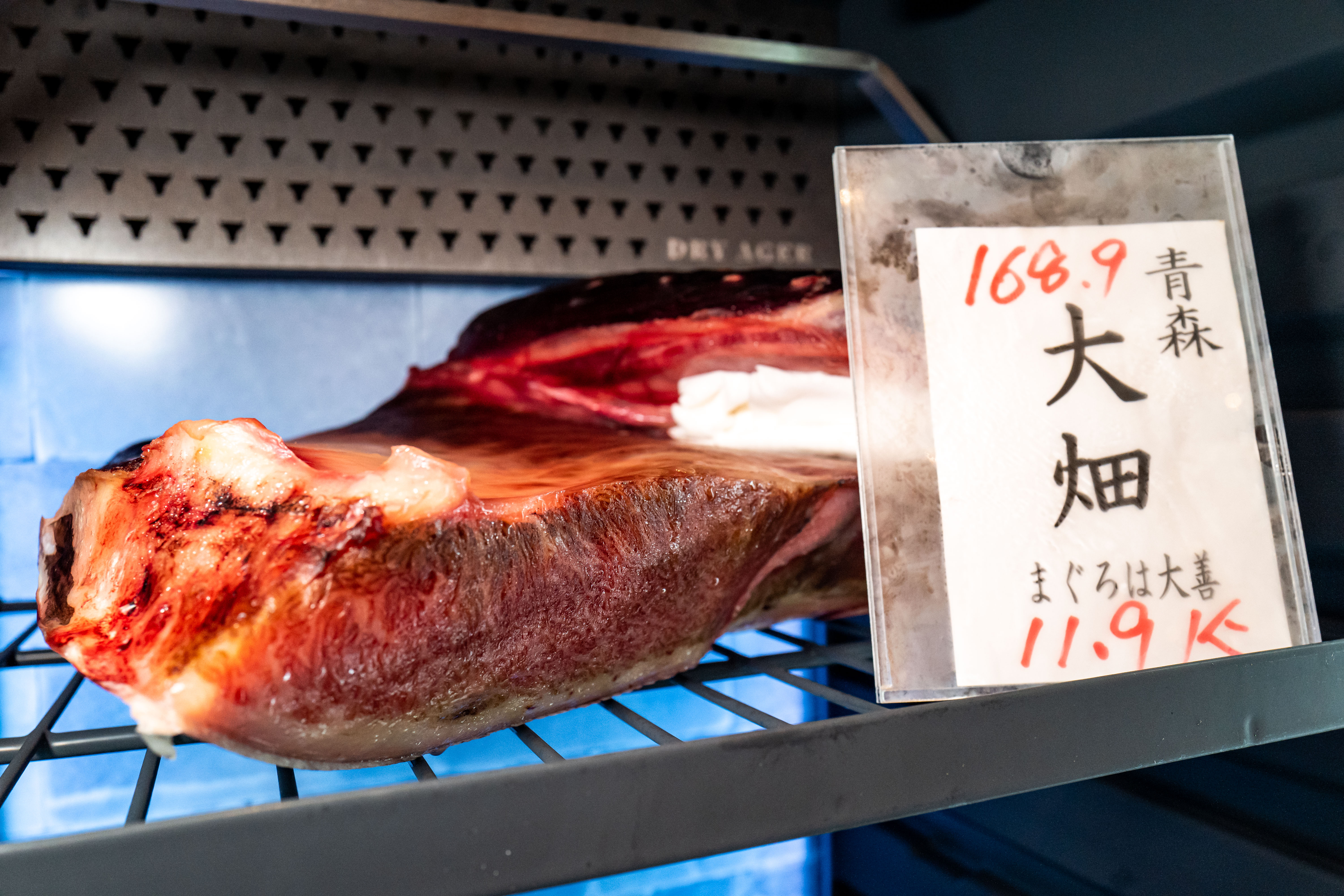
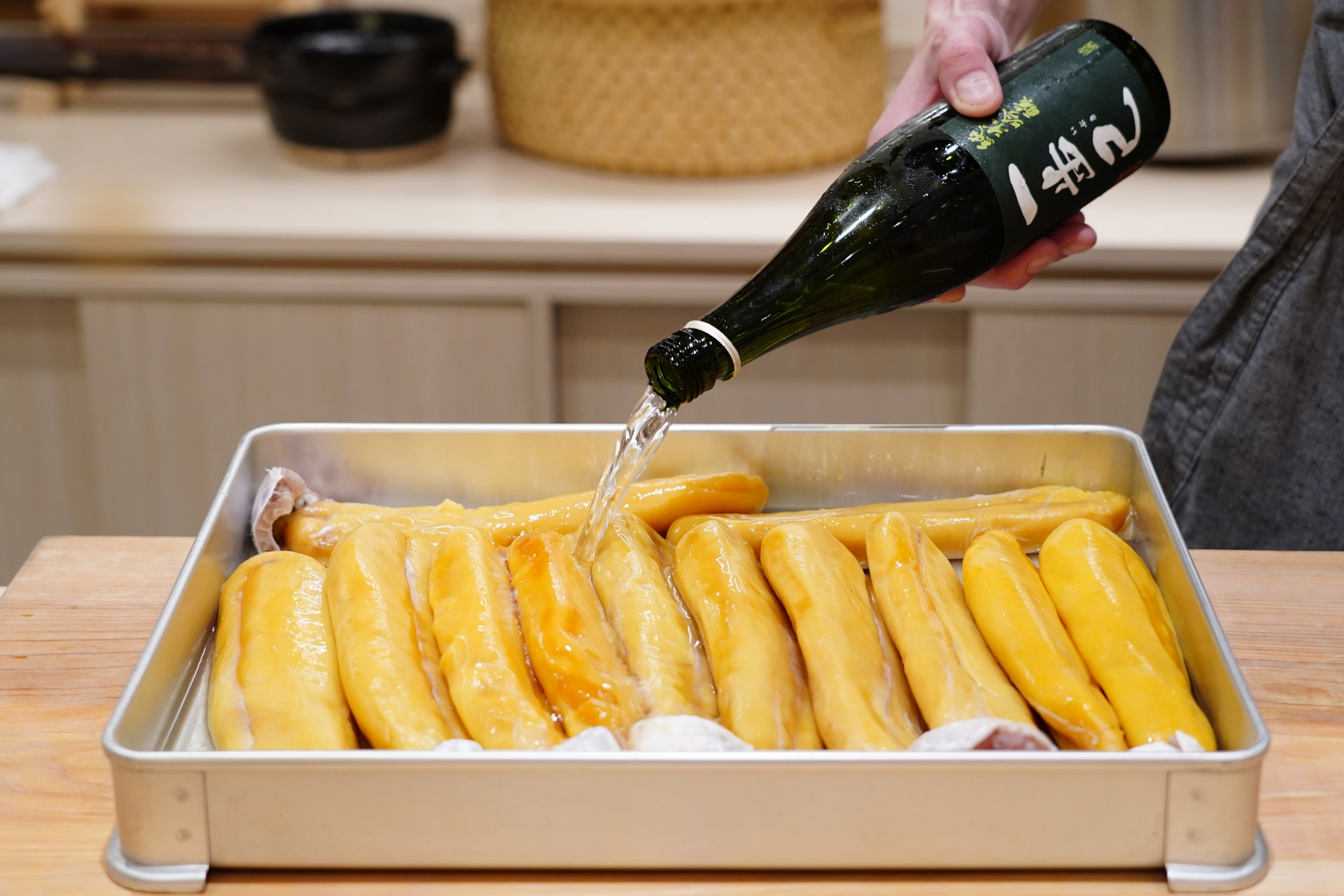
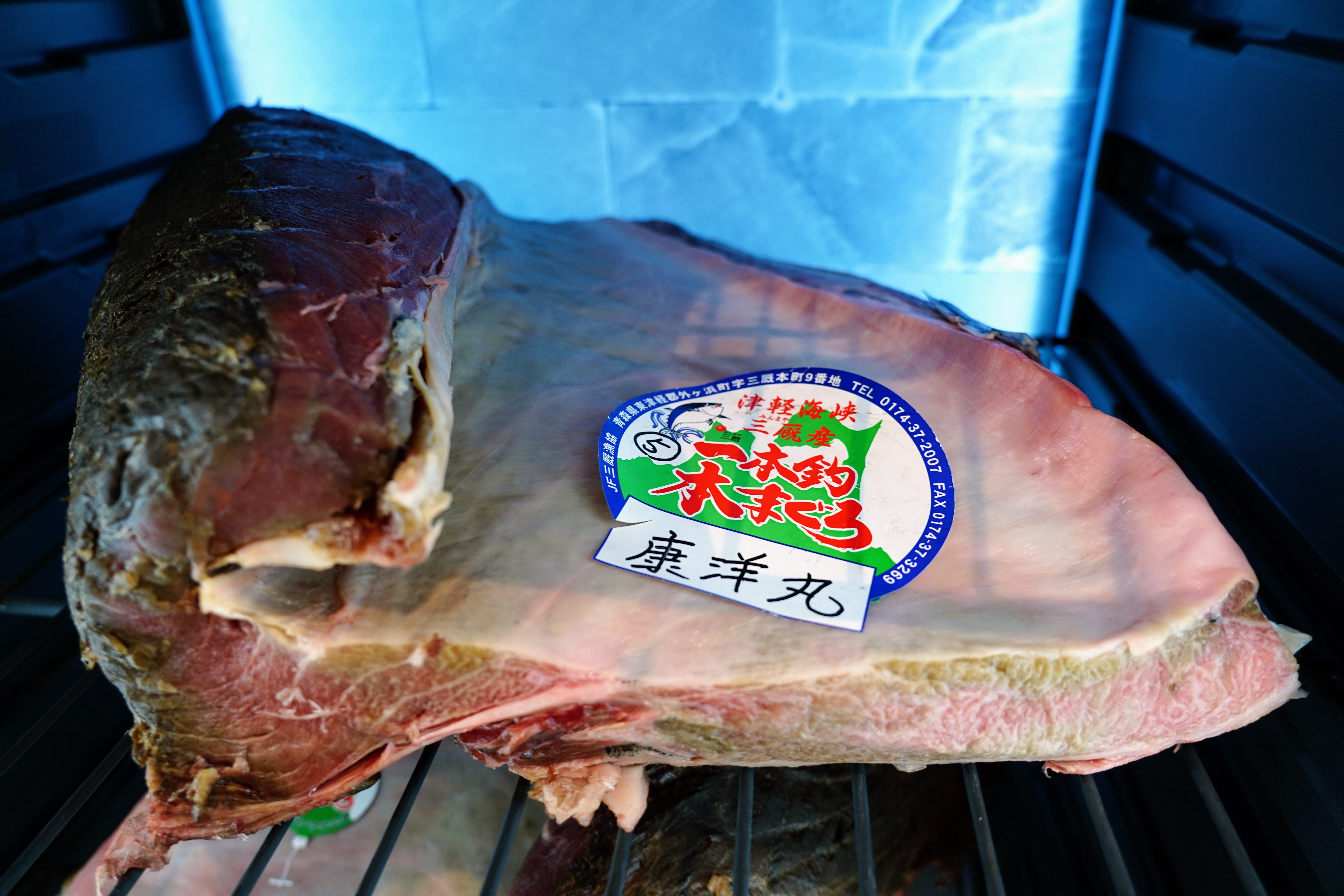
The first-ever Omakase restaurant specializing in aged sushi in Hong Kong.
Executive chef Takeshi, with extensive experience in Japanese cuisine, has developed an original two-stage aging technique merging Hyoten Jukusei freezing point aging with wet aging that magnifies the unique characters and intensifies the umami in the fish, and dry aging that further concentrates the complex flavors.
Our fish aging process is 100% natural - no added salt, no seasoning, and no additives. In the aging process, all the flavors evolve from the fish itself. With wet-aging, the fish develops distinctive flavors with increased juiciness, while dry-aging results in notable weight-loss and a highly-concentrated flavor that is more superior than any fresh fish. Enzymes in the fish break down the tendons and connective tissues, giving the aged product a tenderized texture.




Most of you are familiar with aged beef, but some of you are intimidated by aged fish.
The Dry Ager we use is originally designed for beef aging, but with its built-in UVC sterilization function and panel to control the temperature and humidity, as many experiments have been carried out by the manufacturer and thousands of chefs internationally, it is absolutely suitable for aging all types of meat, seafood, and even vegetables.
Furthermore, the dry-aging process removes excessive moisture and residual blood in the fish that creates fishy odor. Unlike dry-aged beef, dry-aged fish does not develops any mold on the deeply-colored crust even being kept in the Dry Ager for several months. In short, dry-aged fish is a cleaner fish with improved texture and flavors.
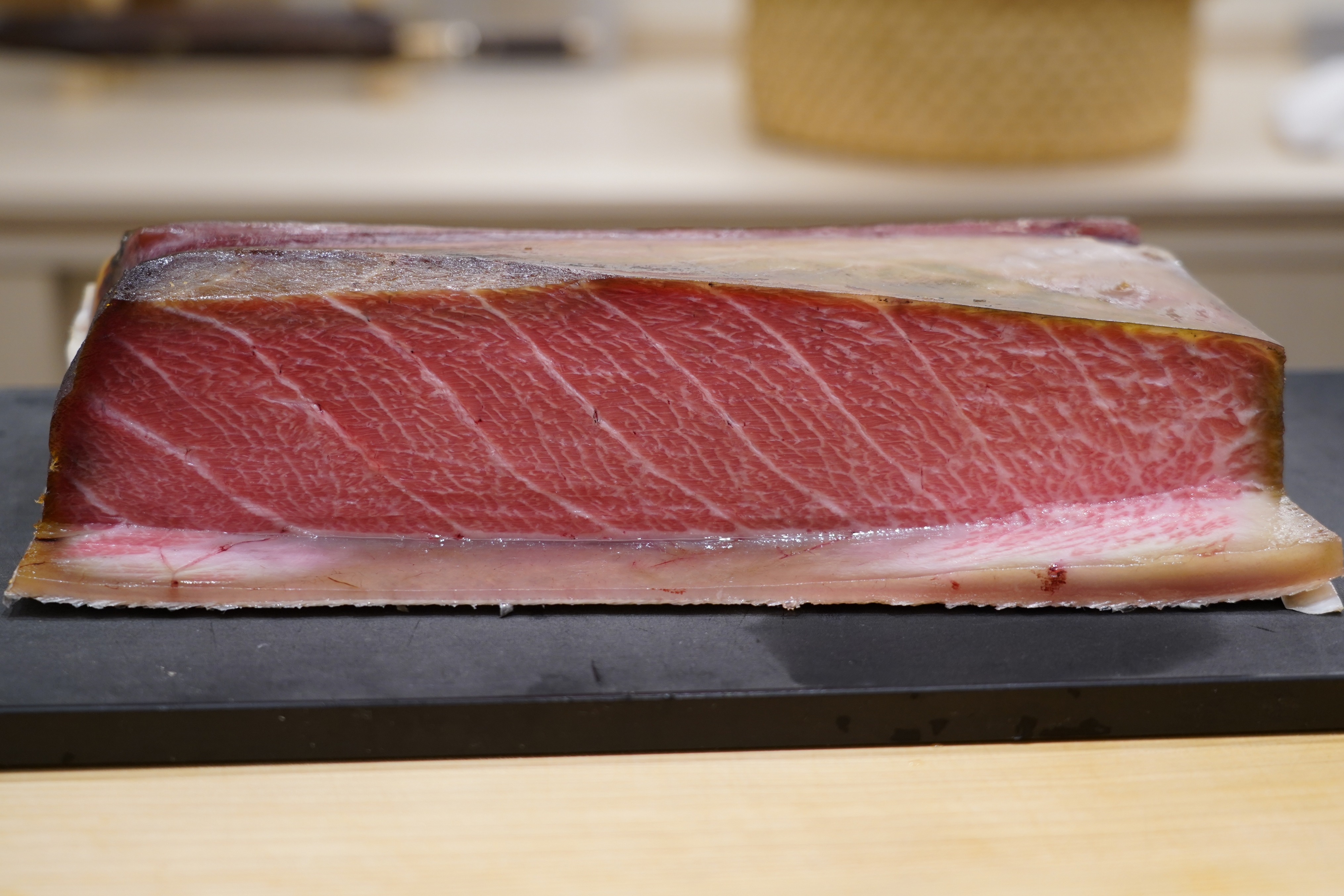
2 months aged 大間本マグロ Oma Maguro - after removing the dark crust at the front
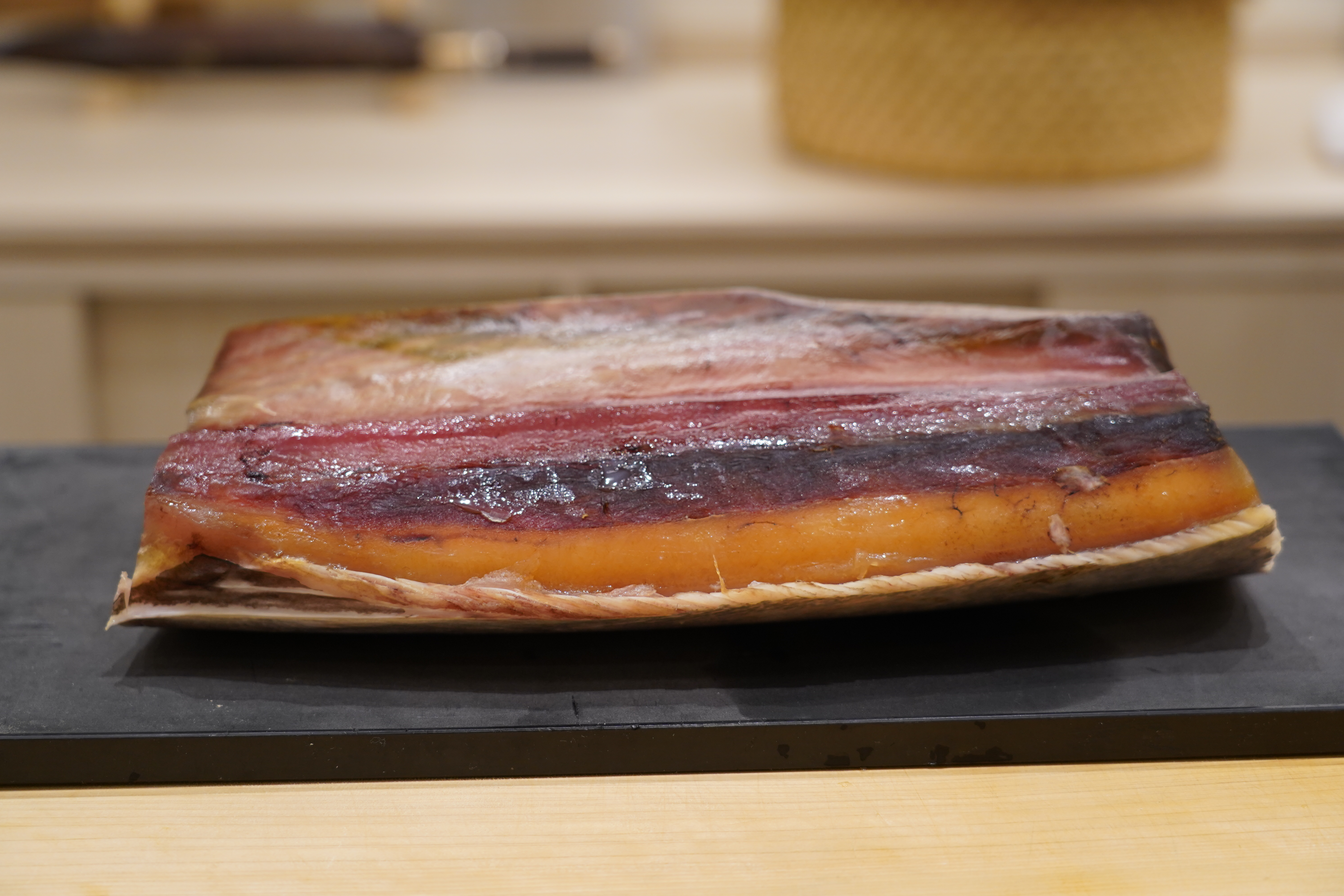
2 months aged 大間本マグロ Oma Maguro
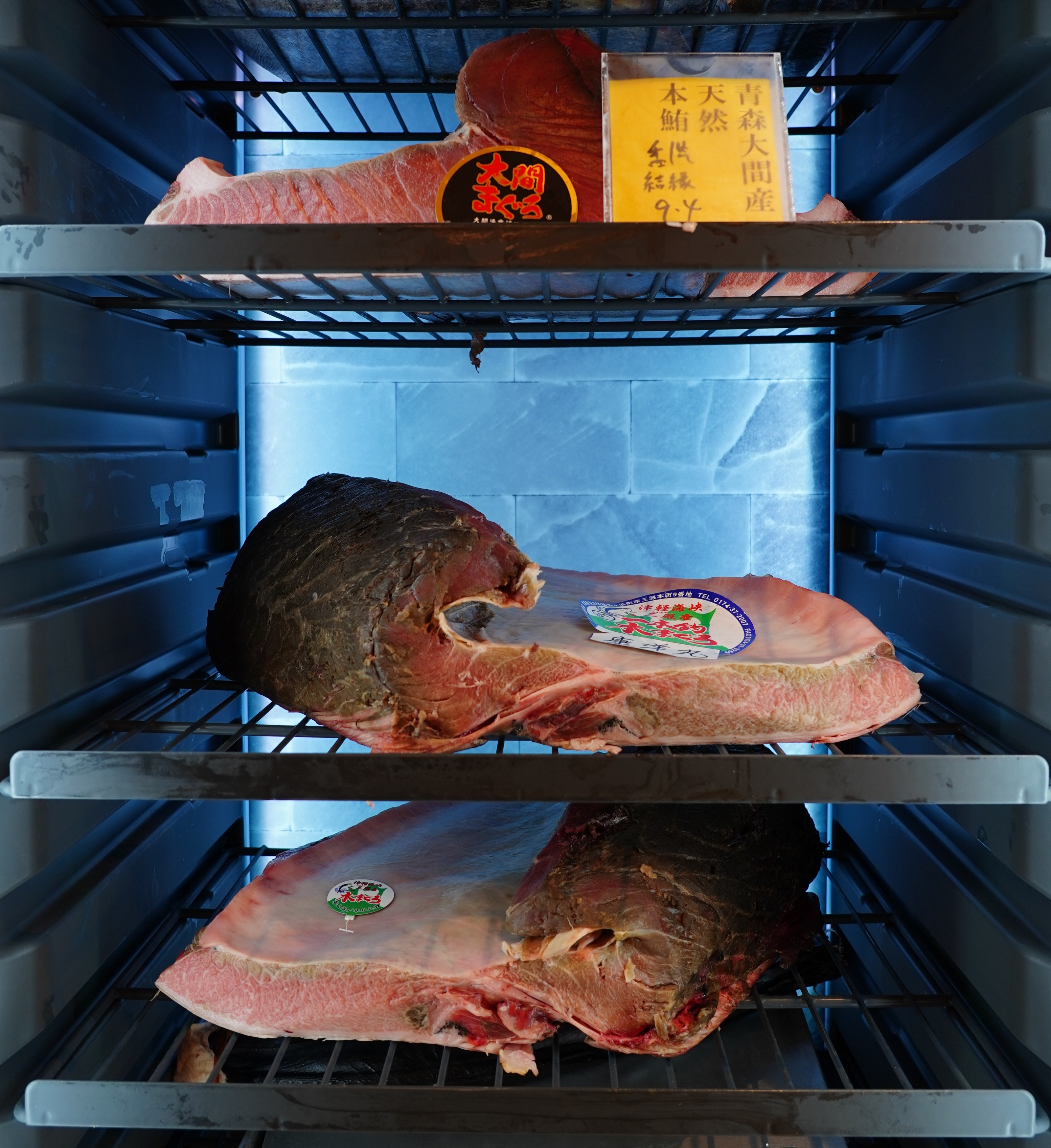
As the dry aging process advances, the water and fish oil seeps out of the front and the back of the tuna, while the skin, fat and bones on the sides maintain moisture. After aging for 49 days, remarkable shrinkage has occurred. Approximately 23% of weight is lost through evaporation. As water is flavorless, the moisture loss leads to intensified fish flavor accompanied by complex taste profiles.
The tuna continues to shrink at a slower rate in the following two weeks. The area closer to the exposed flesh further dries out and more of the dark brown crust forms. Extra moisture is drawn out and the juice is absorbed into the tuna.
The darkened rind and edges will be trimmed off and discarded before serving, leaving behind the most delicate meat with an intense, boosted flavor and finest quality.
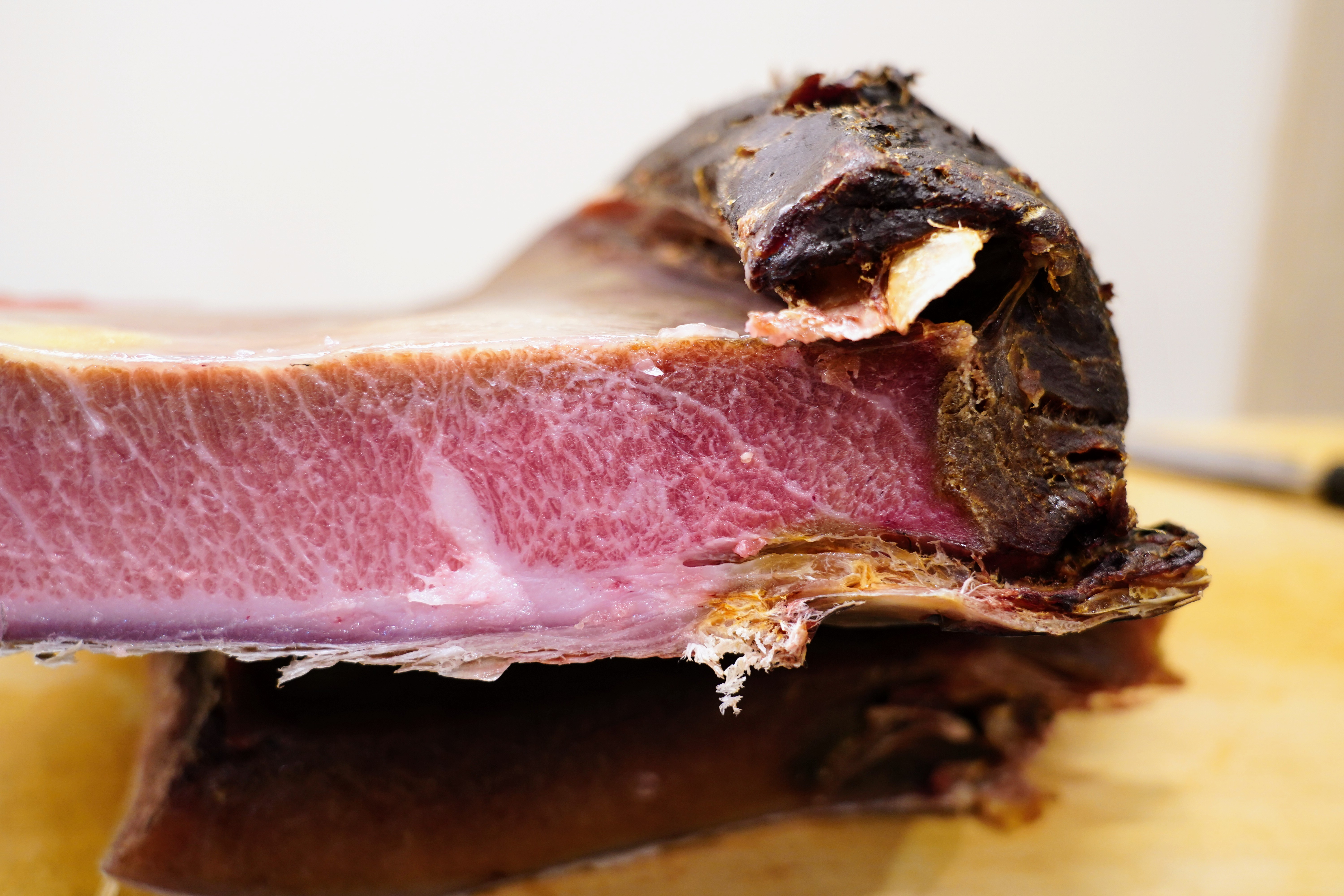
White crystals are spotted in different parts of the aged tuna.
You may have seen and eaten bone-like white crystals in Iberico ham. After aging tuna for over one month, white crystals start to form naturally in various spots of the fish.
The presence of chalky white dots in aged fish and cured meat are actually an indication of excellent-quality product.
These tiny dots are the result of the crystallization of an amino acid called tyrosine, that is produced from another amino acid called phenylalanine. The progress is facilitated by natural, traditional, slow and gradual curing.
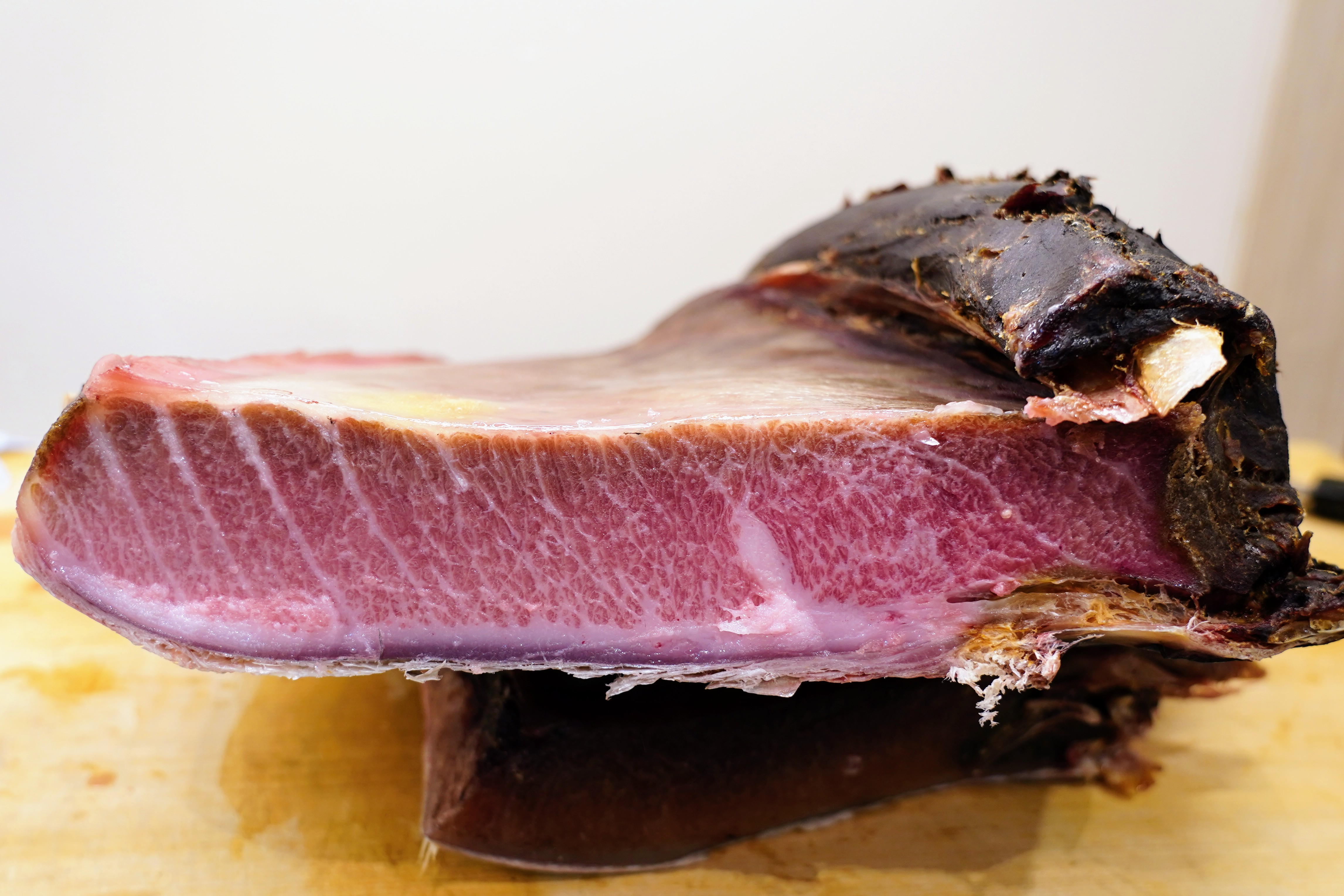
49 days aged wild-caught tuna from 三厩 Minmaya, Aomori - beautifully marbled Otoro
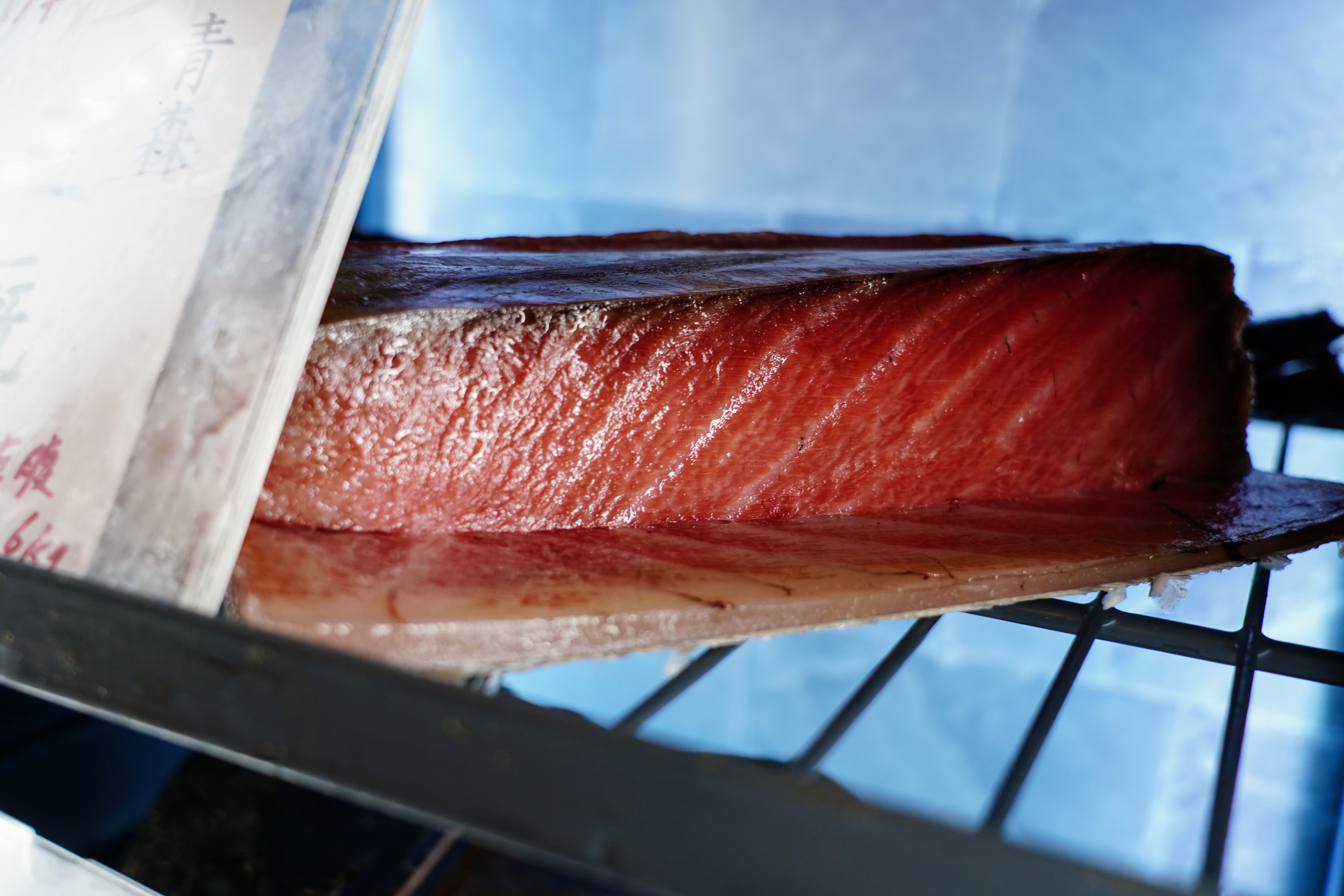
61 days aged wild-caught tuna from 三厩 Minmaya, Aomori - juicy, reddish tuna right after removing the outermost layer at the front
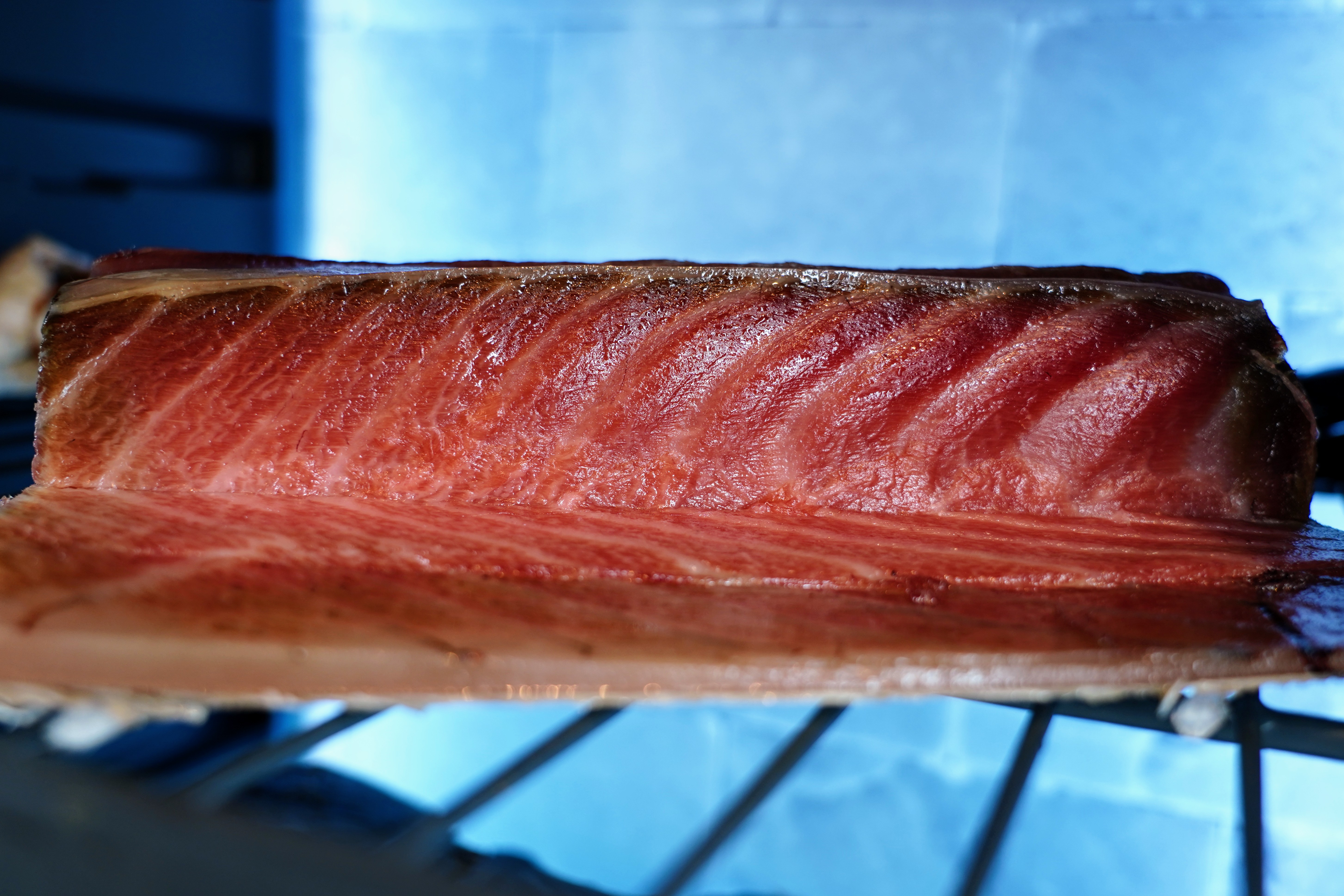
65 days aged wild-caught tuna from 三厩 Minmaya, Aomori - the middle cut has been exposed in a controlled dry aging environment for 24 hours
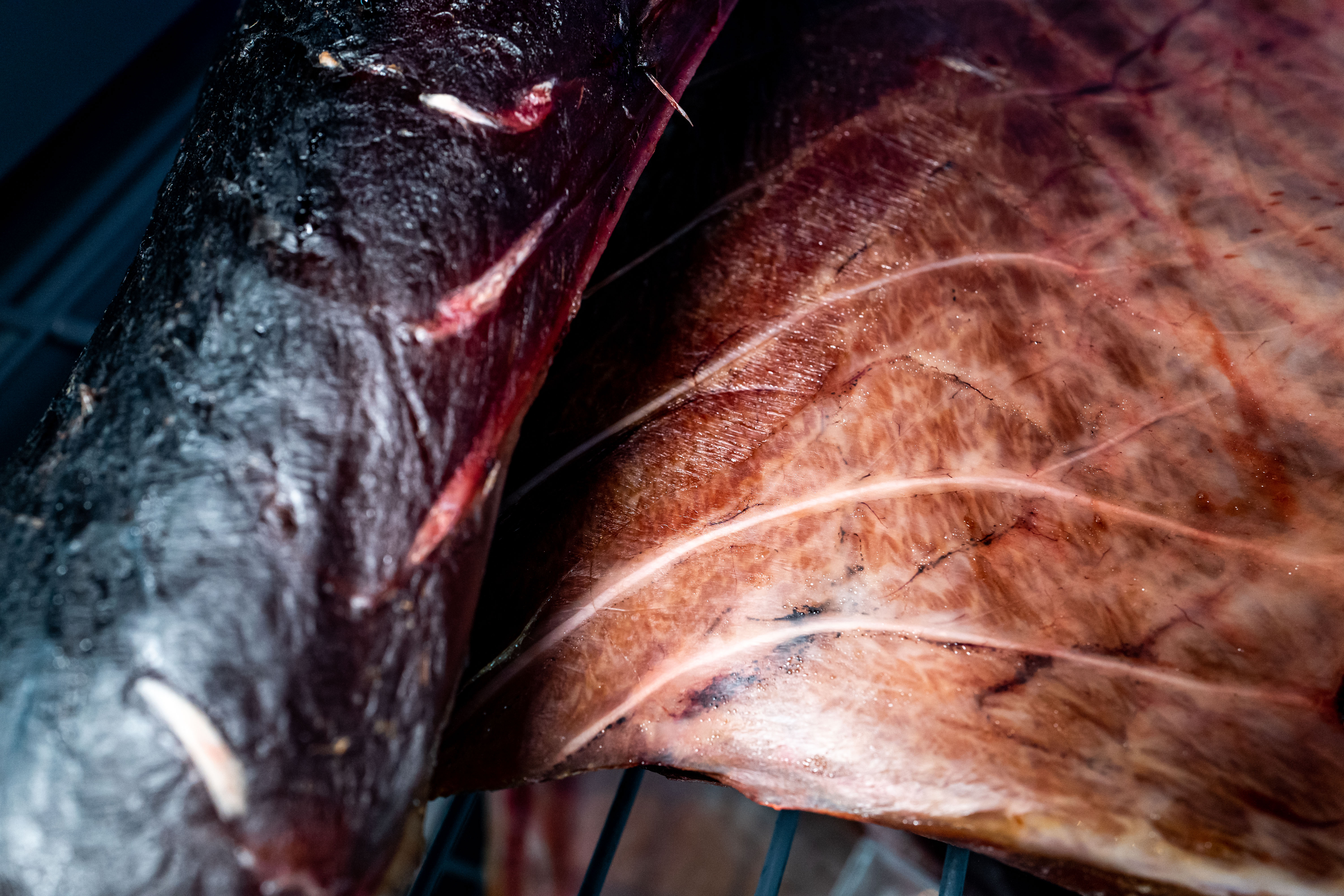
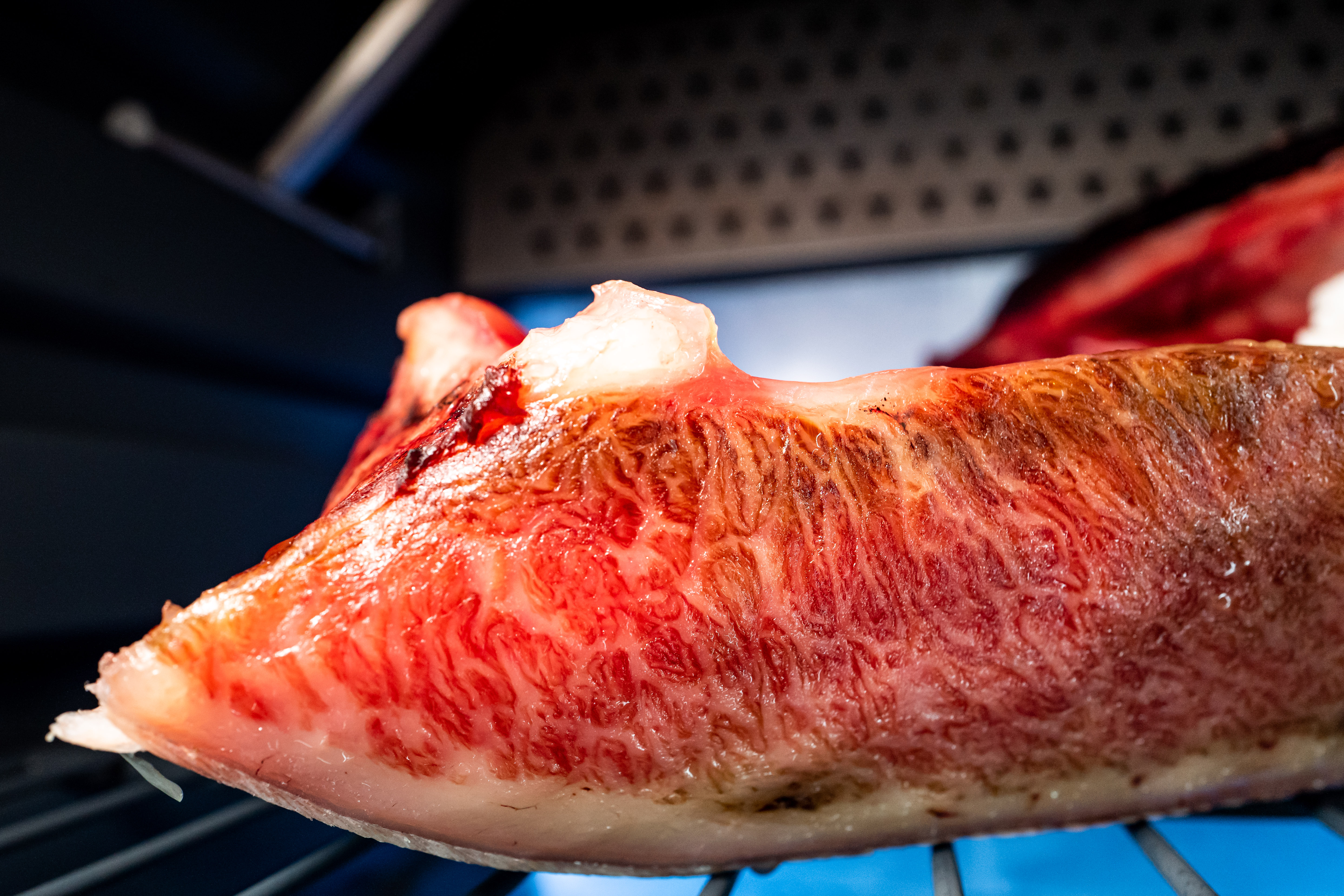
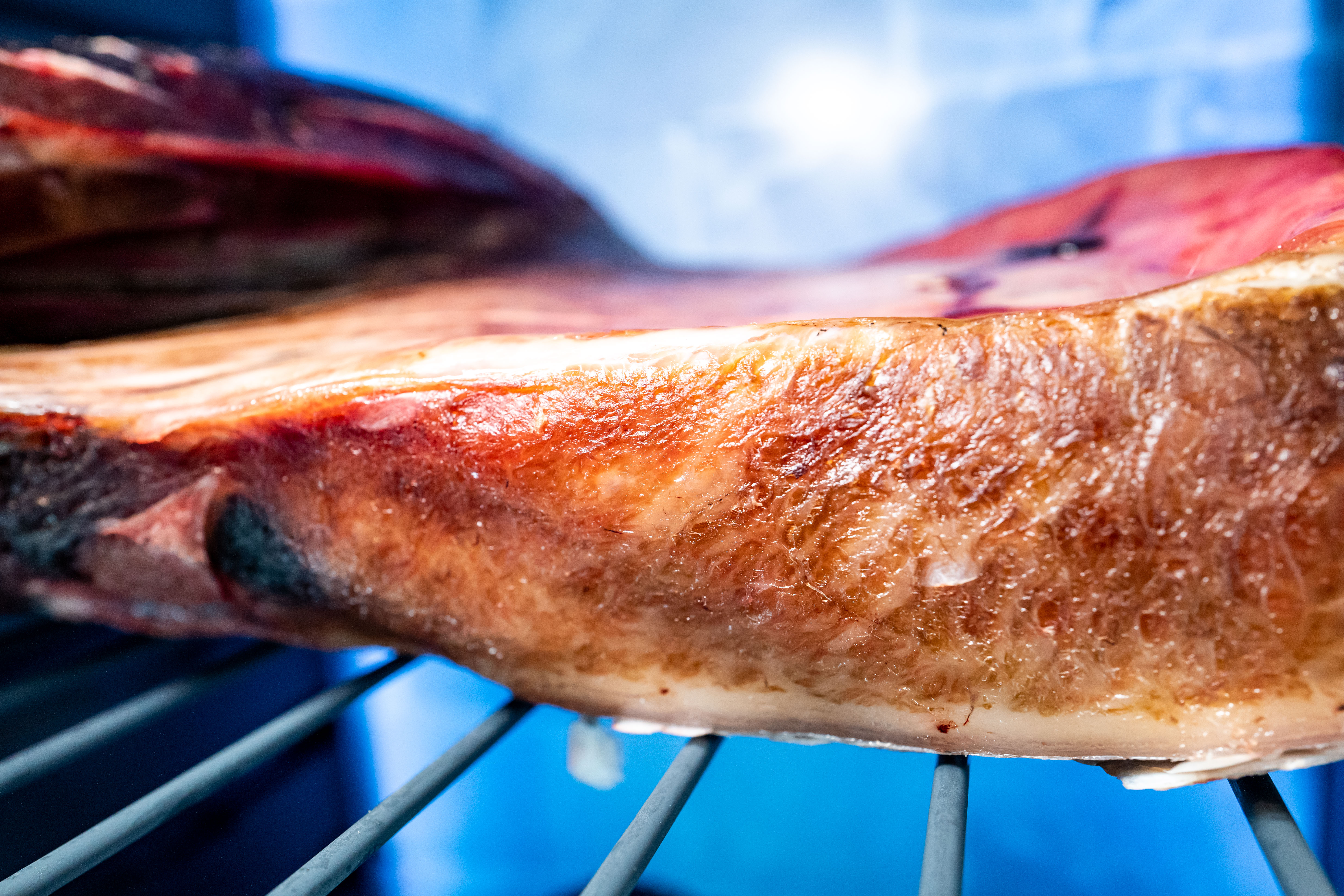
HTML Builder